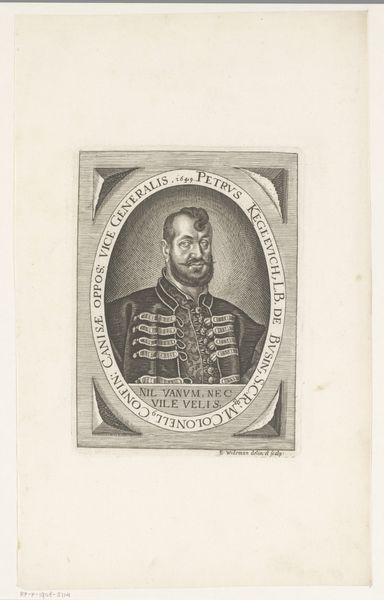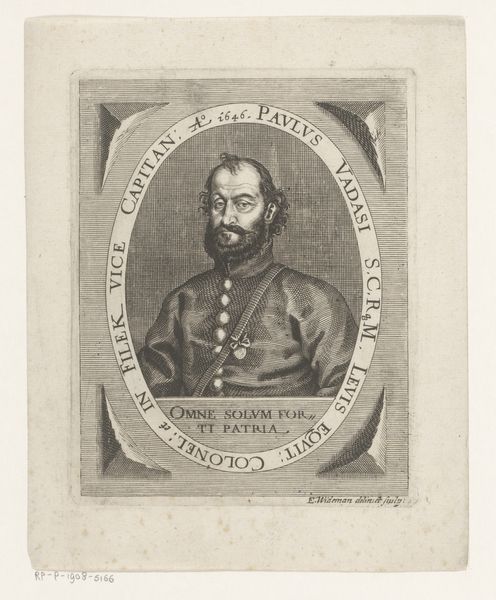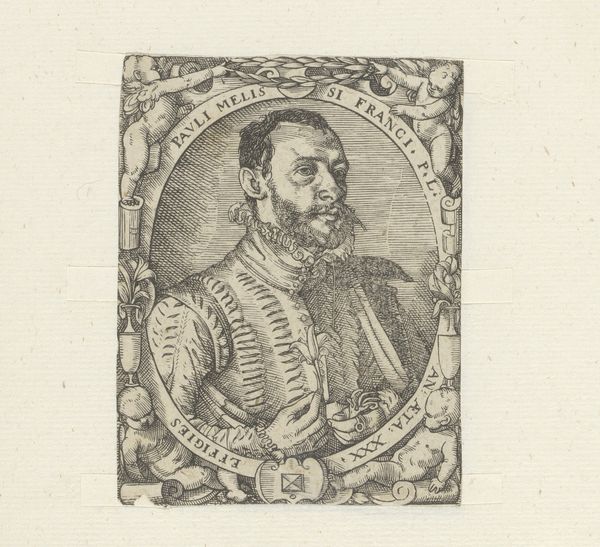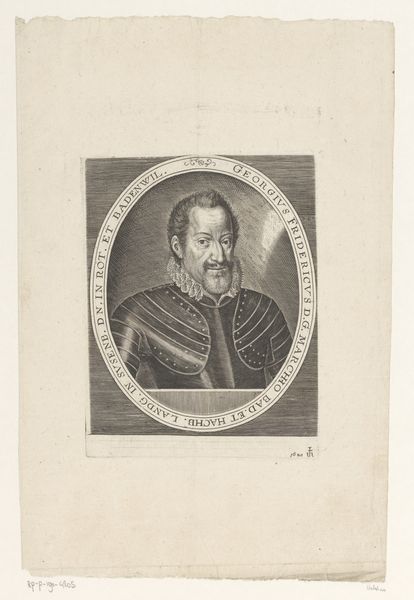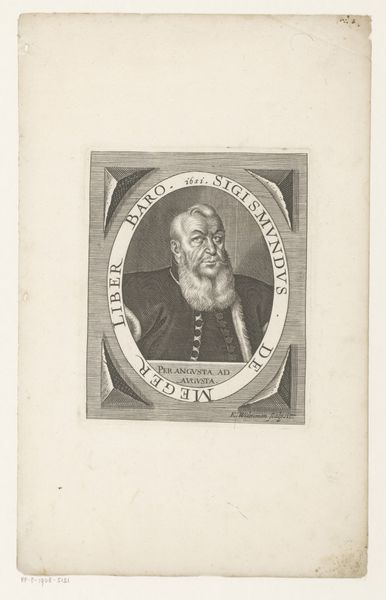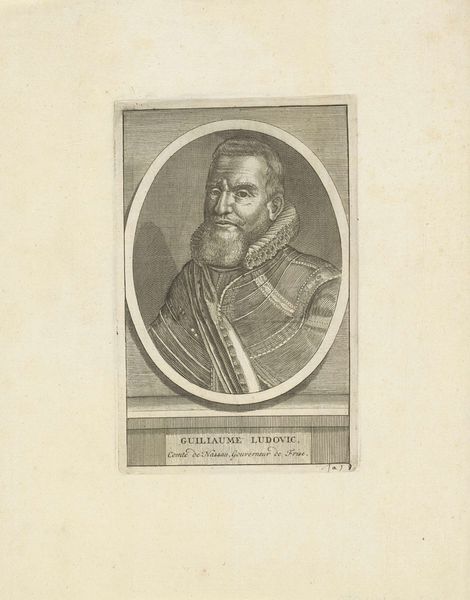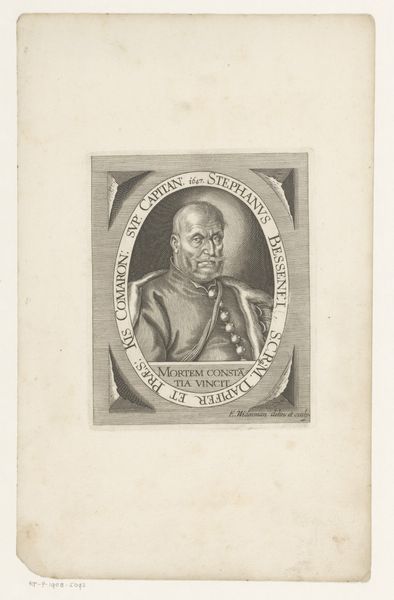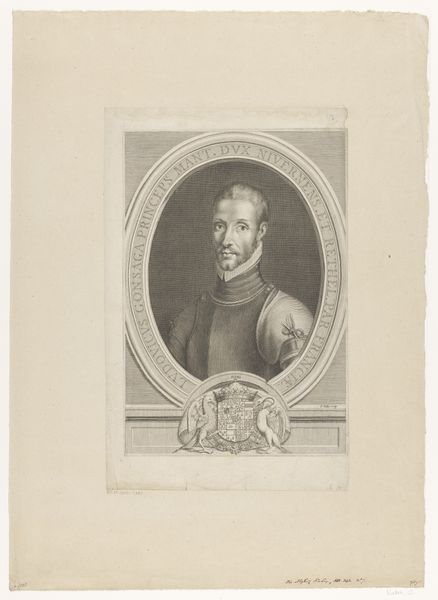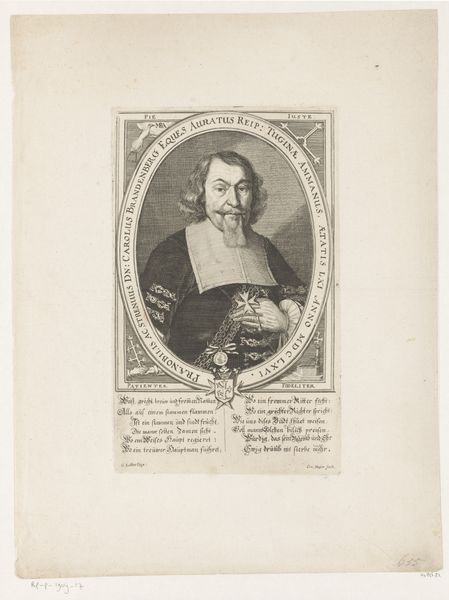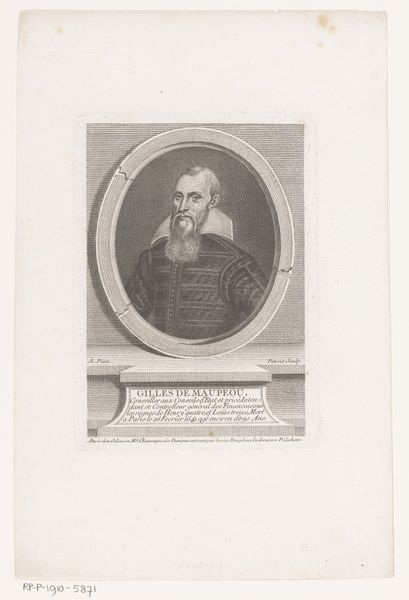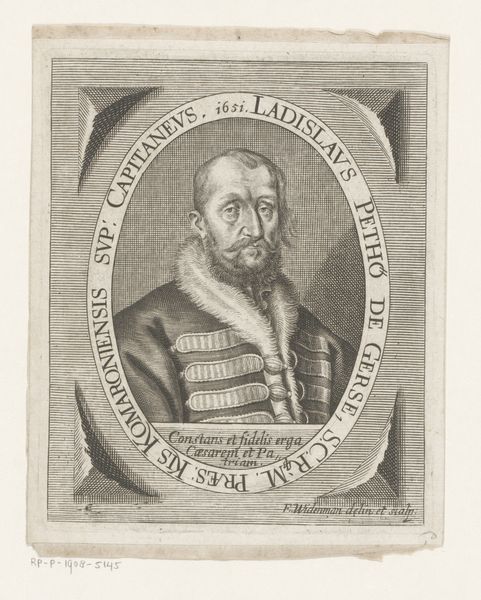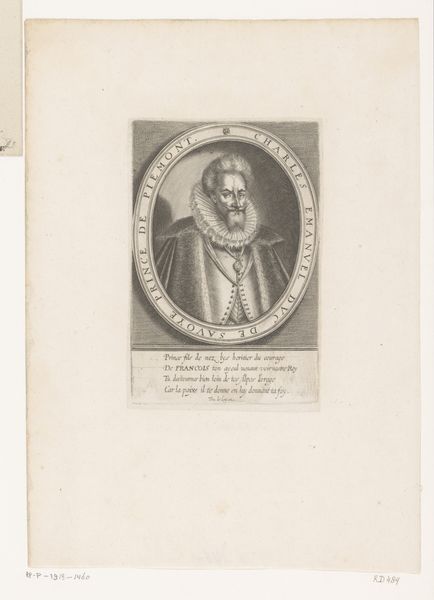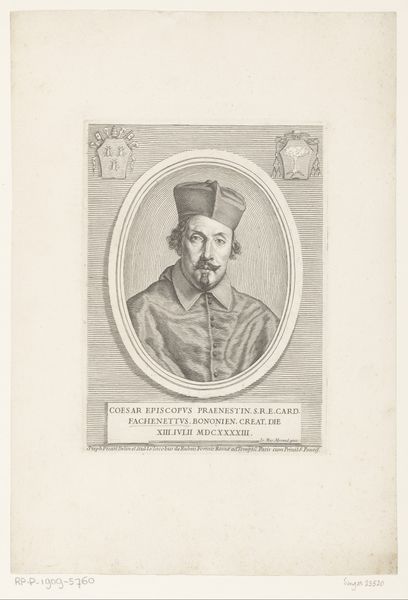
metal, engraving
#
portrait
#
baroque
#
metal
#
history-painting
#
engraving
Dimensions: height 146 mm, width 118 mm
Copyright: Rijks Museum: Open Domain
Elias Widemann created this print of Zsigmond Keglevich in 1649, using etching, a technique that allows for fine, detailed lines. The portrait is framed by two geometric shapes, a rectangle and an oval, disrupting conventional modes of representation. The subject, Keglevich, is presented in a three-quarter view, his gaze direct, engaging the viewer, and framed by an oval border with inscriptions. This oval is then set within a rectangular frame, creating a tension between the organic and the geometric. Note how Widemann uses line and texture to distinguish between Keglevich's fur-lined coat and the smooth surface of his skin. The inscriptions, carefully arranged within the oval, serve as semiotic markers, signaling Keglevich's status and identity. The word "TANDEM," prominently placed at the bottom, infuses a sense of completion, suggesting a culmination of achievements. This layering of form and text invites us to consider how identity is constructed through both visual and linguistic signs.
Comments
No comments
Be the first to comment and join the conversation on the ultimate creative platform.
